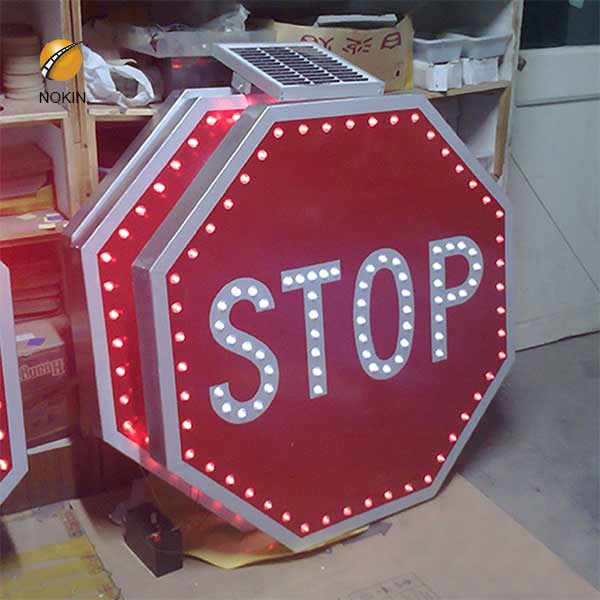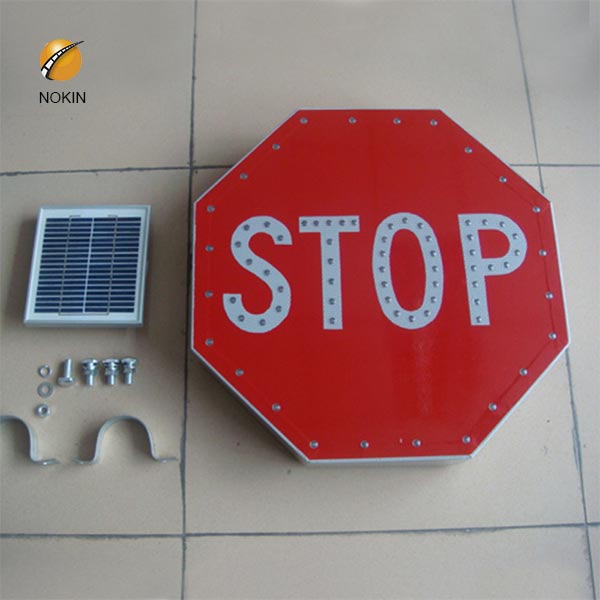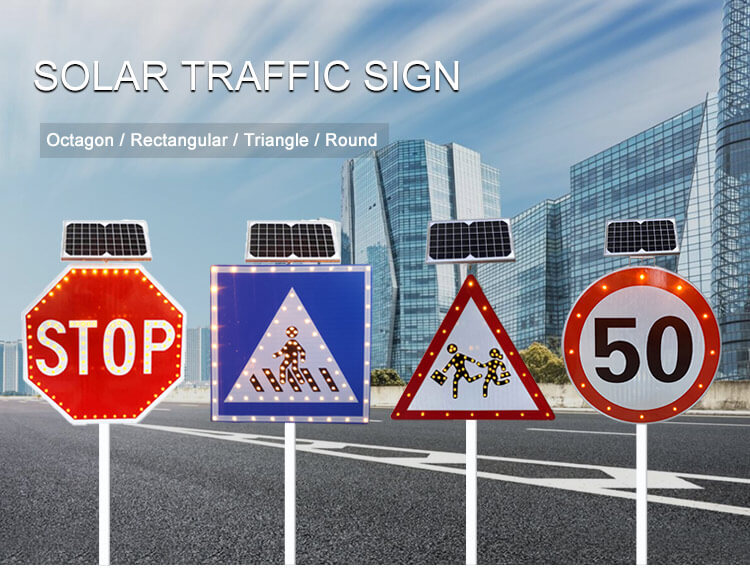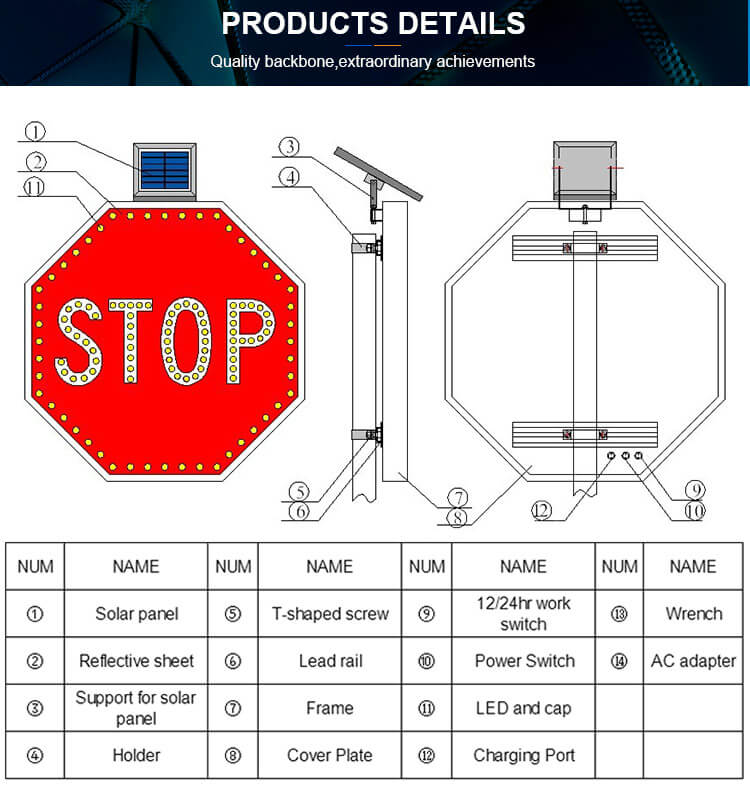




| Material: | Aluminium&Galvanized sheet |
| Reflective film: | 3M Engineering grade or 3M diamond grade |
| Solar panel: | 15V/8W or custom |
| Battery: | 12V/8Ah or custom |
| Voltage: | DC 12V or DC 11.1V |
| Leds distance: | <4.5CM |
| Led color: | Red, Yellow or White |
| Flashing frequency: | 50±2/min |
| Visual distance: | >800m |
| Working in rainy days: | 360H |
| Size: | 600mm /800mm /1000mm or Custom |

as it uses real energy consumption and weather data in Sacramento, California (CA). Second, by adopting several parameters, such as battery use, solar penetration rate, wattage of solar, and pre-cooling systems, this study attempts to produce the most effective trans-active energy model that adopts solar energy. In this sense, the
Aug 13, 2021 · Solar Energy Technologies Office, Solar Futures Study (2021). Utility-scale PV benchmark LCOE targets are for a 100-MW project on level ground with single-axis tracking. Commercial PV benchmark LCOE targets are for a 200-kW flat-roof system with 10 degrees tilt.
Nov 8, 2023 · 4. Decreased Efficiency and Loss of Investment. Broken solar panels may not always pose immediate physical dangers, but they can still impact your pocketbook. When a panel is damaged, it becomes less efficient in harnessing sunlight, which means you’re not getting the full return on your investment.
23/12/2020 · Even with your RV batteries and generator in place, opting for energy efficient and even electricity-free solutions is always a wise move while you are camping, especially on long trips off the beaten path or dry camping.Choosing the best solar panels for RV will not only save you up to thousands of dollars each year on electricity bills but also is a quiet, sustainable and
How Much Does the Xbox One’s “Energy Saving” Mode 20/6/2017 · Energy Saving mode disables all these features to save power. It’s similar to turning off your computer when you’re d Tel: +86-13602600950
The cost of energy may change depending on the units of energy (kWh) or power (kW) consumed. These tariff rate structures are often called tiered or block tariff rates. Note that the cost of energy or power may increase or decrease with volume of usage, and depends on the tariff rate structure set by that utility. Time-of-Use (TOU)
Sunrun Inc. solar reviews, complaints, address & solar 8/12/2020 · Sunrun Inc. reviews and complaints, reviews of the brands of solar panels they sell, their locations and the cos Tel: +86-13602600950
Feb 10, 2022 · Based on the capital costs and cumulative investment data of VRE technologies, solar PV had a learning rate of 33% while the onshore wind had a learning rate of 18% between 2010 and 2020. This implies that, with each doubling of installed capacity, the unit capital cost of solar PV declined by 33% and that of onshore wind by 18% on average.
Solar Performance and Efficiency. The conversion efficiency of a photovoltaic (PV) cell, or solar cell, is the percentage of the solar energy shining on a PV device that is converted into usable electricity. Improving this conversion efficiency is a key goal of research and helps make PV technologies cost-competitive with conventional sources
Solar water heating systems use heat exchangers to transfer solar energy absorbed in solar collectors to potable (drinkable) water. Heat exchangers can be made of steel, copper, bronze, stainless steel, aluminum, or cast iron. Solar heating systems usually use copper, because it is a good thermal conductor and has greater resistance to
Specifically, AFUE is the ratio of the furnace's or boiler's annual heat output compared to its total annual fossil fuel energy consumed. An AFUE of 90% means that 90% of the energy in the fuel becomes heat for the home and the other 10% escapes up the chimney and elsewhere. AFUE doesn't include the heat losses of the duct system or piping
Cost Efficiency of Solar Energy Compared to Fossil Fuels. Fossil fuels were once the most cost-effective fueling option, driving their global acceptance. Their power generation ranges between $0.05 per kilowatt-hours and $0.18 per kilowatt-hours depending on the source. Solar power prices are at an all-time low, dropping by 82% since 2010.
The growing global effort to speed up LED adoption could ultimately cut global energy costs and carbon pollution 5 times as much. Let’s look at some key charts and facts that illustrate the LED lighting “miracle,” which is every bit as remarkable — and every bit as unheralded by the major media — as the solar miracle , the battery miracle , and the electric vehicle miracle .
Jun 18, 2021 · The Dark Side of Solar Power. As interest in clean energy surges, used solar panels are going straight into landfill. Summary. Solar energy is a rapidly growing market, which should be good news
Aug 23, 2023 · This degradation follows a specific curve, known as the solar panel degradation curve. The rate of degradation differs depending on the quality of the panels, with high-quality panels degrading at a rate of around 0.5% per year. This degradation impacts savings by reducing the overall energy production of the panels.